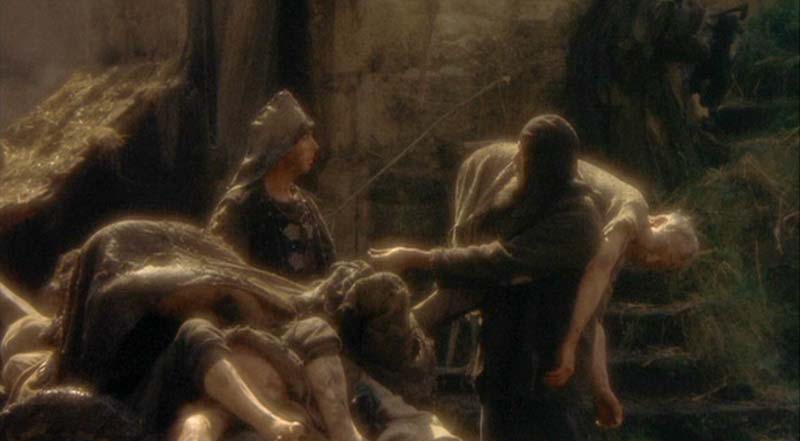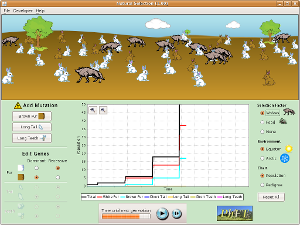These are all from Drosophila melanogaster:
| Gene name | History behind name |
| 18wheeler | This gene is expressed in 18 stripes in developing larvae. |
| agnostic | Agnostic flies fail to learn odors in certain temperatures. Agnostic people also have problems making up their minds. |
| amontillado | Mutant larvae do not hatch. In Edgar Allen Poe's short story "The Cask of Amontillado," a man who is still alive is walled in. |
| brokenheart | A mutation in this gene causes a defect in heart development. |
| cheap date | These mutants are very sensitive to alcohol. |
| cleopatra | In these mutants, an interaction with the asp gene is lethal. Queen Cleopatra supposedly committed suicide with a poisonous asp. |
| clown | Mutants' eyes are red and white. |
| coitus interruptus | Mutant males literally engage in withdrawal during copulation (it lasts about 60% of the normal 20 minutes). |
| dachshund | Flies have crippled legs, resembling this dog species. |
| dreadlocks | The connections between nerve cells of these flies are not correct, and the result resembles the hairstyle of the same name. |
| drop dead | These mutants' brains deteriorate rapidly; they begin to walk in an uncoordinated way and then die. |
| dunce | These flies have impaired learning. |
| glass-bottom boat | These flies' larvae are transparent. |
| grim, reaper | These two genes together mediate programmed cell death (apoptosis) in the fruit fly. |
| groucho | Mutants have a greater-than-normal number of bristles (like Groucho Marx). |
| icebox | Female icebox mutants do not care about courting males. |
| ken and barbie | Both male and female mutants lack external genitalia (like Ken and Barbie). |
| limo | This gene is involved in protein transport. |
| lot | A Biblical reference: mutants like salt more than usual. |
| lush | Mutation causes increased desire for alcohol. |
| out cold | Mutants lose coordination when the temperature falls, and eventually become paralyzed. |
| sarah | Mutants are practically sterile (another Biblical reference, to Sarah, Abraham's wife). |
| stuck | Mutant flies get stuck in females. |
| swiss cheese | Mutants have holes in their brains that resemble swiss cheese. |
| van gogh | Swirling wing hair patterns resemble van Gogh's paintings. |
| yuri | Mutants have difficulty with gravity. The gene was found on the 40th anniversary of Yuri Gagarin's historic space flight. |
Thanks to the tinman Web site I referenced above for these gene names and explanations; visit the site for more. Fun stuff!












